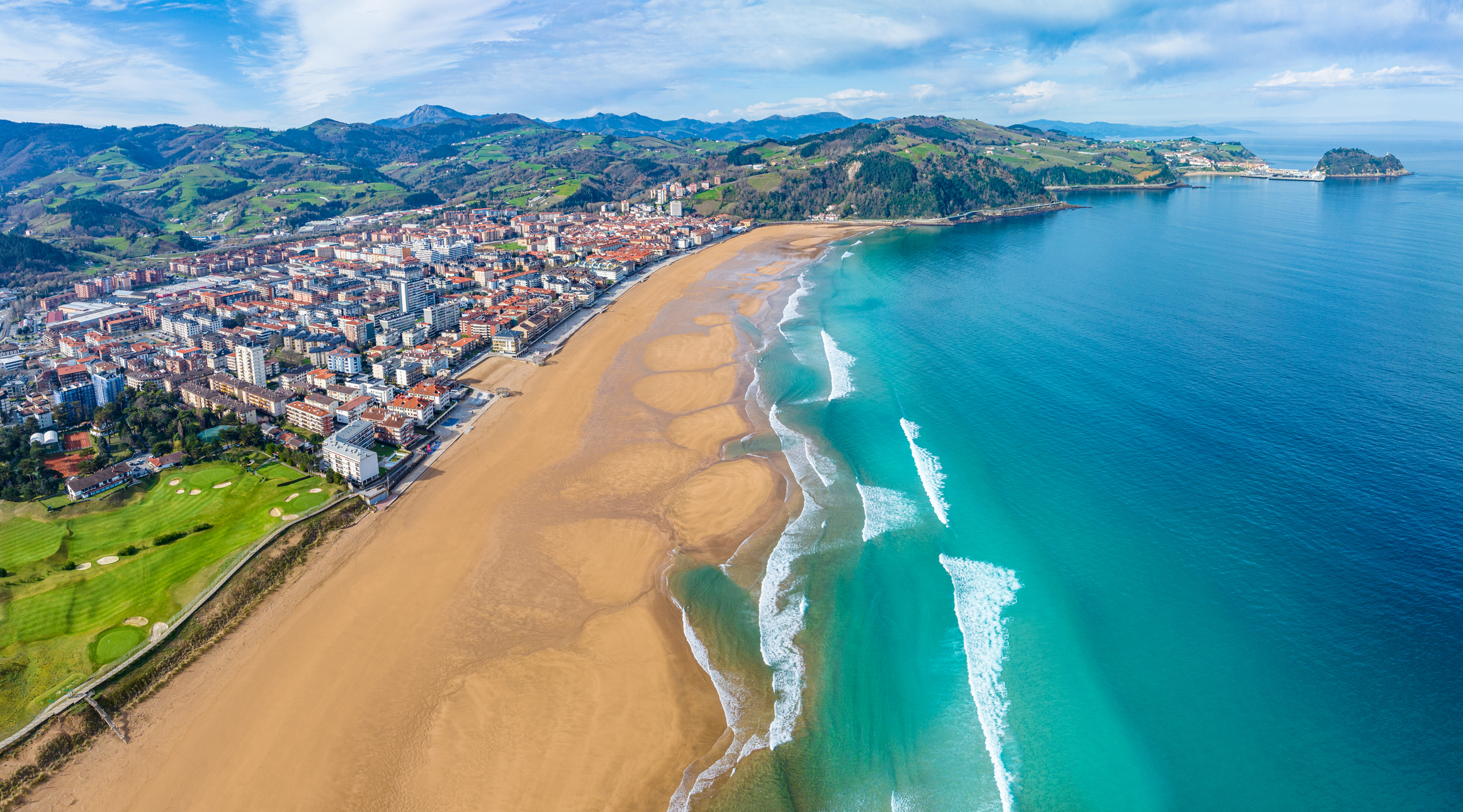Gipuzkoa (rendered in Spanish as Guipúzcoa) may be Spain´s smallest province, but it looms large in Euskadi (the Basque Country) especially thanks to its capital, Donostia-San Sebastián, considered one of the most beautiful cities in the entire country. But the province is also packed with delightful small towns and lovely countryside, including a dramatic coastline on the Bay of Biscay. Let us introduce you to five of them, all within a less-than-45-minute drive of Donostia:
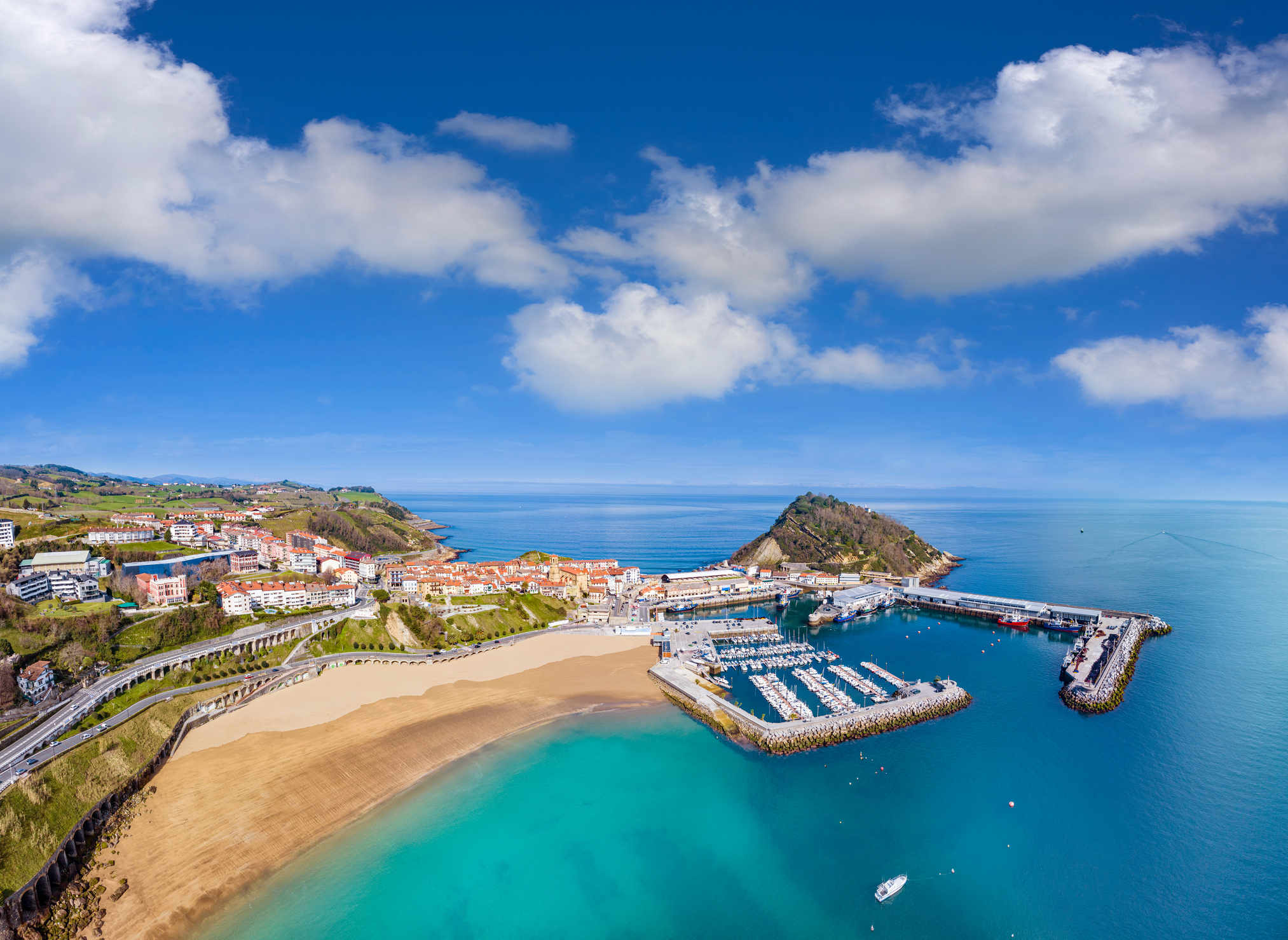
Getaria
Just a half hour along the coast from Donostia, this little fishing town (with just under 3,000 residents) ensconced on a rocky cape is one of Gipuzkoa´s oldest settlements, dating back to the late 12th century, and in addition to enjoying a pair of sandy beaches here (one of them a favourite of surfers), visitors can also experience some of that history along the steep cobblestone streets of the picturesque old town. Landmarks include the Plaza Elkano, featuring a statue of the square´s namesake, a sailor who in 1522 became the first to circumnavigate the globe; the 15th-century Gothic Church of San Salvador; and the 14th-century Zarauz Tewer House. Plus there´s a newer and somewhat unexpected attraction here: a 12-year-old museum dedicated to the legendary fashion designer Cristóbal Balenciaga, a home town boy.
Beyond all this, Getaria is known for wineries which produce the crisp distinctive Basque white known as txakoli; several of them welcome visitors, and you can also enjoy them along with freshly caught seafood at a number of waterfront restaurants.
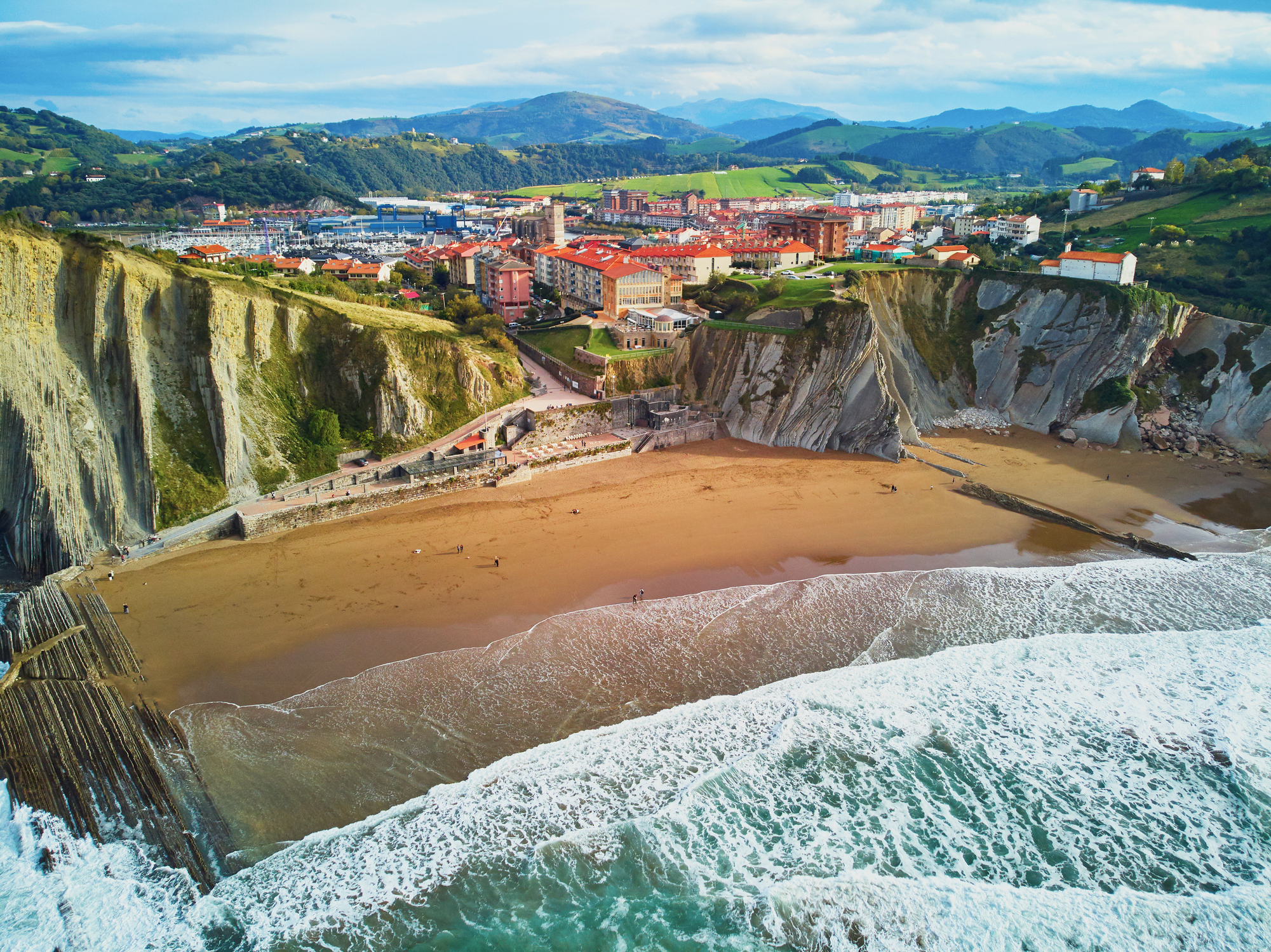
Zumaia
A mere ten minutes west of Getaria on a bay fed by the Urola and Narrondo Rivers, Zumaia is also a good bit larger – with a population of just under 10,000 – and can also boast its fair share of culture and monuments reflecting a history dating back to its 14th-century founding. Good examples include the fortresslike Gothic Church of San Pedro and handsome historic manses such as Foronda, Olazabal, and Ubillos.
It´s also an appealing destination for its own nice pair of beaches, as well as some interesting local geology such as steep surrounding cliffs favoured by climbers and the unusual striated, sheetlike sandstone and limestone rocks at water´s edge known as flysch. And on the culinary front, the local seafood speciality is olagarroa (pulpo in Spanish, octopus in English), often eaten for example braised in a vegetable-paprika sauce, and with its own day, celebrated across town on 23 September.
Zarautz
About 25 minutes or so from Donostia, this town of nearly 23,000 is known for its 2.5-kilometre-long (1½ -mile) beach, the longest on the Basque coast, and one also famous for some of Spain´s best surfing. Apart from that, there´s an old quarter, as well, and though the town was founded in 1237, the oldest buildings remaining date back to the 15th and 16th centuries, such as the the church of Santa María la Real, the Dotorekua House, the Luzea Tower, and the Narros Palace (where Queen Isabel II stayed during her summer holidays in the 19th century); these last two, however, are private and can only be admired from outside. And the oldest buildingof all, the 15th-century Gothic Zarautz Tower, is home to the local museum of art and history.
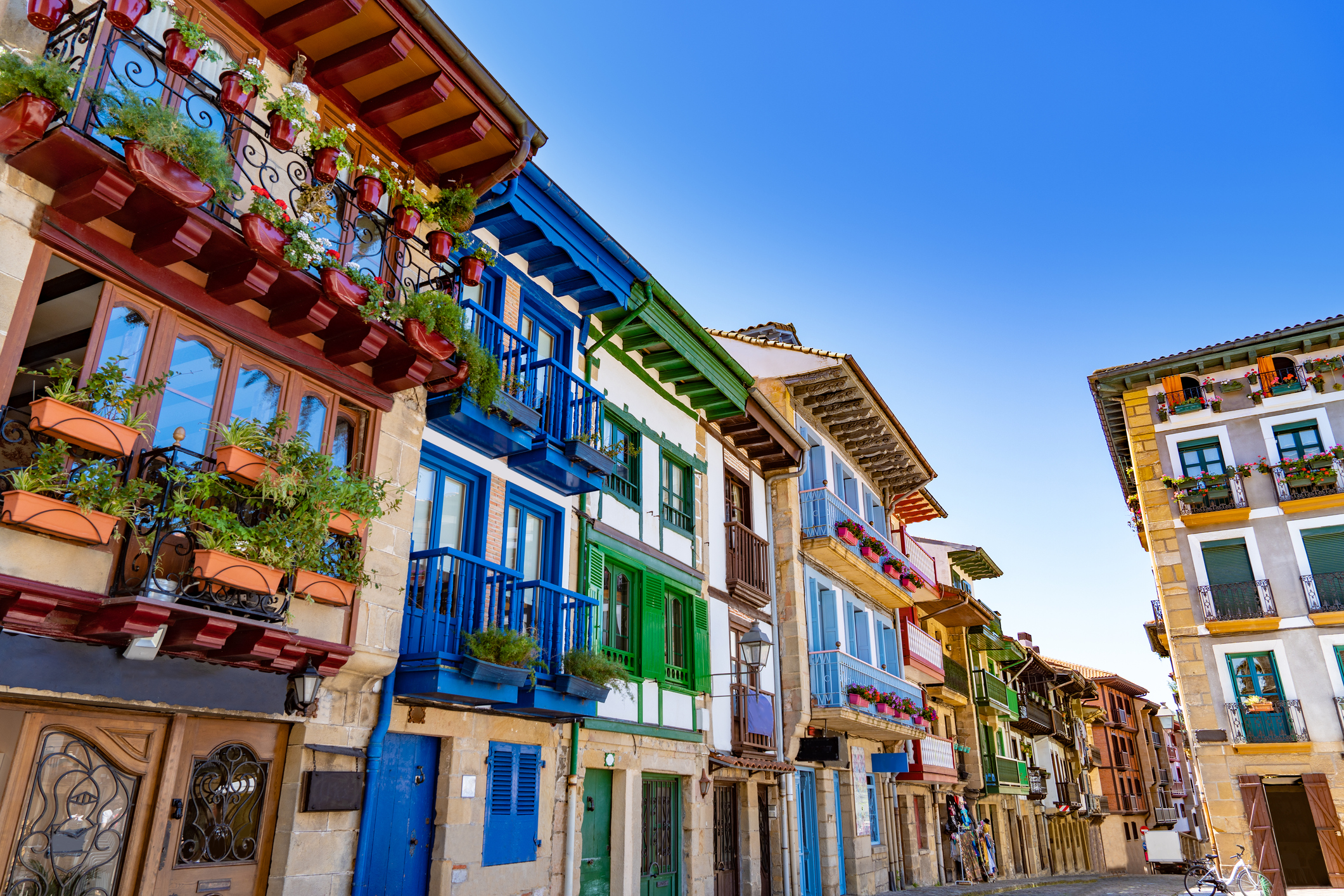
Hondarribia
Way up in the province’s northwest corner, on the French border, with a population of around 17,000, this town, called Fuenterrabia in Spanish, is the oldest – founded by the Visigoths in the 6th century – and also quite possibly the prettiest in Euskadi (barely 20 minutes from Donostia– and in fact is home to the city´s airport).
What makes Hondarrabia so comely is its wall-encircled medieval old town, cobblestone-paved and centred around main drag Calle Mayor and the the Plaza de Armas square, where you´ll find the starkly imposing Castle of Emperor Carlos V, dating back to the 10th century and now home to a parador, one of Spain´s network of quasi-public inns, mostly in historic buildings. Other landmarks include the 15th-century Gothic Church of Santa María de la Asunción; the 18th-century Baroque town hall; and a number of aristocratic manses such as the 17th-century Casadevante Palace and Casa Zuloaga, as well as the 18th-century Casa de los Guevara.
The town´s other big draw is its food scene, especially in the traditional fishing neighborhood of La Marina. It´s packed with colorfully painted houses as well as myriad bars and restaurants, and you won’t be able to resist their tasty seafood fresh from the Cantabrian Sea such as pintxos de txangurro (spider-crab tartlets), prawn salad, marmitako (a tune-and-potato stew), and a nice variety of cod dishes.
And yes, there´s a nice beach here, too – 700 metres´ (nearly a half mile´s) worth!
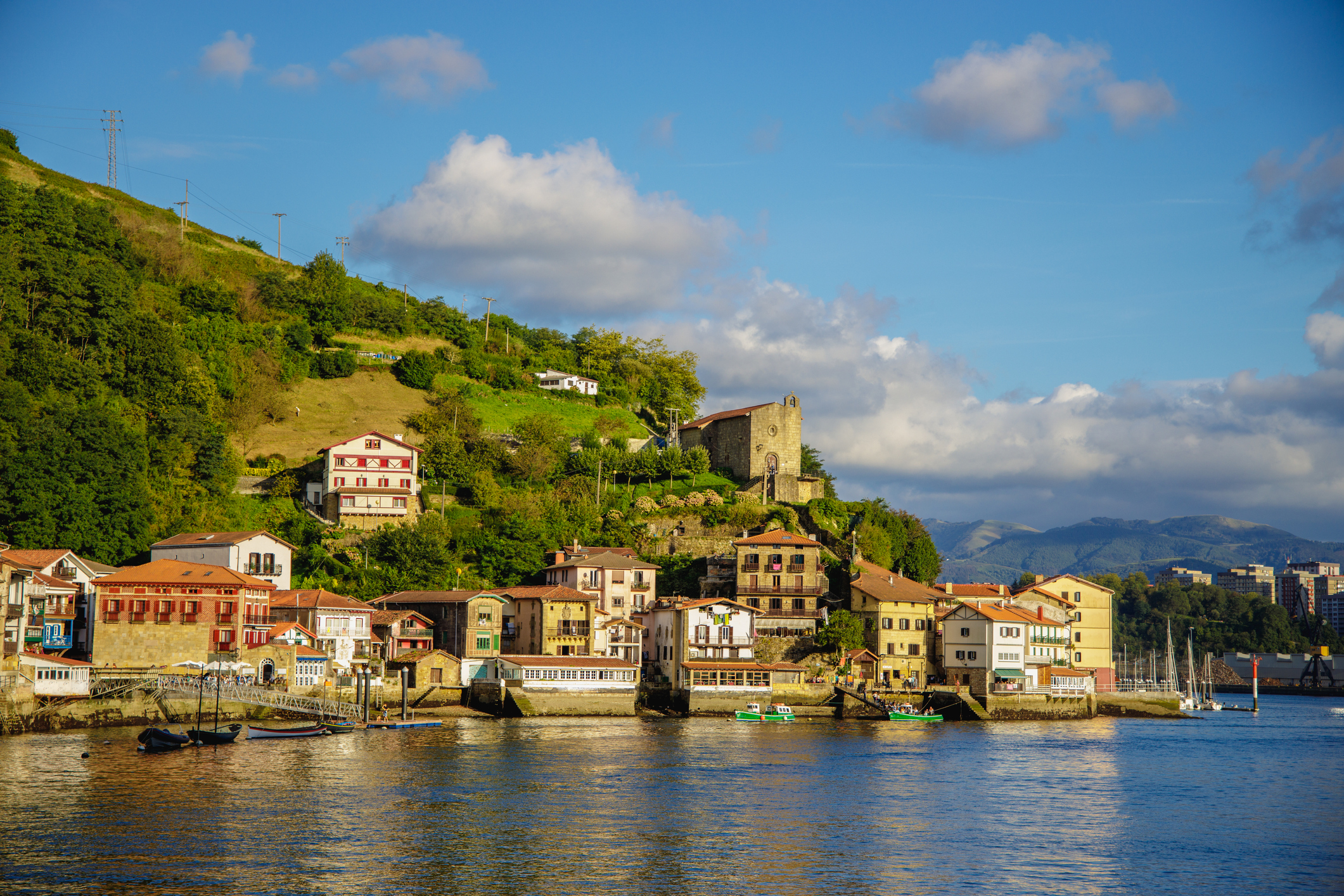
Pasaia
Actually the closest on our list to Donostia (less than ten minutes away), this town of 16,000 is home to Gipuzkoa´s largest commercial port and is actually split in two by the Bay of Pasaia; the most convenient way to visit both halves is via the motor boat ferry which runs throughout the day. In the historical record at least as far back as the beginning of the 13th century, Pasaia is a great place to take in traditional Basque fishing-village architecture, with a plethora of colourful houses on its streets (some with little passageways beneath them) as well as traditional fishing boats on its wharf.
And speaking of boats, you can get a first-hand look at at Albaola the Sea Factory of the Basques, where in addition to an exhibition about the history of local boatbuilding and whaling they actually build replicas and run boatbuilding and seamanship schools; located in a nearby cove, it´s only accessible via boat, which they provide from the port area.
And it goes without saying that the seafood is spectacular here, as well, especially in the San Juan part of town with its cosy bars, pubs, and restaurants.
(Fun fact: this is also the birthplace of the late, famed fashion designer Paco Rabanne – although so far there´s no museum or other acknowledgement of Pasaia´s most famous hometown boy, like Getaria has for Balenciaga.)
Sound enticing? Come discover not just Donostia-San Sebastián but the delights of the nearby coast with Iberia!
Image: Alberto Carrera; MEDITERRANEAN; encrier; Roberto Fernandez Garcia;


